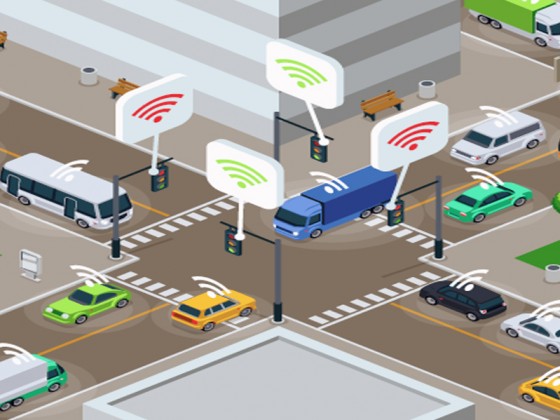Dr Raslan Ahmad is currently a Senior Vice President of Malaysian Industry-Government Group for High Technology (MIGHT). Raslan gathers a highly-dynamic background in key development areas namely smart cities, renewal energy and Industry 4.0. At MIGHT, one of the key initiatives under his leadership involves the establishment of Malaysia Smart Cities Alliances (MSCA). The program is designed as an advocacy platform for key stakeholder engagement to create greater awareness on smart city technologies, applications, policies and best practices. Significantly, this collaborative-effort ensures that smart city development across Malaysia is aligned with the objectives of Sustainable Development Goals (SDGs) driven by industry best practices.
Designing the Future City
Sustainable urban mobility plan – the micro battles
What challenges and opportunities do we have in front of us in designing future cities? MITI recently published Industry 4wrd – Malaysia National Policy on Industry 4.0. In short, the action plan outlines the government’s commitment to capture Malaysia’s Industry 4.0 interests to ensure the country is well prepared for the next technology upheaval. All of us need to, in a word, mobilise.
Largely, we are very concerned about what consequences Industry 4.0 can have in relation to our cities. In turn, we are looking into how these two aspects—city planning and Industry 4.0, will play out and more importantly, how fast and pervasive emerging trends will determine the country’s future and urbanisation.
Urbanisation is unavoidable as technology keeps evolving. At the moment, the size of the world’s population is growing rapidly and the majority of it—about 66% will be living in urban areas by 2050; and Malaysia’s urbanisation rate is among the fastest in East Asia. Today, the convergence of various technologies, cloud computing, robotics and AI, for example, are pushing new innovation out. As a result of this, our economy, social and community norms ought to change too.
Does this pose a threat to our social and economic health? It does, and in a few years, it would make a telling argument to see how far these new technologies would change our lives, and in the context of designing future cities, one of the major issues we are facing at the moment is transportation and how our mobility habits will relatively change. It is a matter of leveraging on the convergence of various technologies in respect to our social, economic and environmental vitality.
I think everybody acknowledges the need to adopt a new way of transportation and mobility to ensure the movement of people, goods and services is smooth. One important thing to note here is, mobility drives economic wealth and improves social connectivity. Most importantly, we need to make sure, every action we take meets the mobility objective of our society members from every walk of life. Now, we are seeing more and more discussions taking place regarding Transit Oriented Development (TOD), 3C model (compact, connected, and coordinated), door to door, seamless delivery, and of course, our rail project is helping too. As a result, our mobility agenda is becoming critical in many ways.
Speaking of future mobility and the automotive industry, we don’t have many choices but to adopt new approaches. These approaches need to be uberconnected and employ a sharing model. To a great degree, vehicles of tomorrow constitute what emerging trends making way at present are pointing to, for example, we are seeing various testing series and pilots of autonomous vehicles that are lightweight and battery powered. Similarly, our Prime Minister recently mooted the idea of a New National Car Project (NNCP) to take local car manufacturers forward, where in a few years, we need to be able to produce autonomous semi-electric and full-electric vehicles to compete. These advancements are also a timely response to our commitment in handling climate change issue. As a country, we need to lower our carbon emissions by 40% for the development to be sustainable. But the question that begs asking is this; how do we achieve this without adopting and deploying new technology?
This brings us to Industry 4.0. As I mentioned earlier, some of us are very sceptical, others on the flipside are more objective and optimistic, and some quarters take this wait and see stance, but the reality is—the enabling technologies have reached our doors in many ways and sooner or later, they will change how we move about.
Solving urban mobility issues with Industry 4.0 technologies
Here’s one caveat. We are famous as users of technology, but we are not famous as contributors of technology. Should we remain like this forever, we are going to put a strain on the economy, and it is our next generation who will pay for our oversight if we don’t act proactively now.
To justify my point, we can clearly see at the global level, emerging mobility and smart city technologies are going mainstream. At the end of the day, this rapid reorganisation will change our economy, industries and cities. Therefore, I think, we have enough reasons to convince us why we need to embrace the Industry 4.0 to design the future of our cities.
As you are well aware, many of the formidable challenges around economic, social and urban constraints we are facing today can be resolved through Industry 4.0 technologies. But the real issue is, how do we adopt new technologies that can improve our cities in terms of sustainability, mobility, economic vitality and equality?
This is the issue that we need to debate perhaps put more thoughts and inputs around our forward directions. To be effective, we need to consult and solicit feedback from all key stakeholder groups, not just from the government ecosystem, but more importantly the industry, communities, businesses and academia.
This is because we need everybody to work together to mobilise the agenda. We need to be united to push our agenda together. Again, let’s go back to one familiar target in relation to SDG number 11, toward sustainable cities and communities. Technology will help our cities foster equitable growth when we talk about equality and environmental responsibility—all these can only be achieved by embracing new technologies and pursuing new industries.
Early last year, when we hosted the World Urban Forum, a lot of the discussions centred around the adoption of new urban agendas and how these goals can be realised. Surely we cannot run away from technology and its correlation with the economy, as well as its significance to the well-being of our society.
I would like to highlight some examples here, in particular, how the World Economic Forum identifies potential Industry 4.0 technologies that can be deployed and adopted in realising some of our smart city agendas. To solve all of our urbanisation problems today and design liveable, sustainable cities, we need to adopt a far more strategic approach, of which technology is only one part. This is why we need a holistic and integrated approach to be coordinated. It requires involvement from all key stakeholders to achieve the goals when we are talking about smart planning and construction, among other things.
This is no longer just a dream. The technologies enabling these “forward changes” in mobility have arrived. In response, we need to make it a reality to allow our cities to thrive in the future. And to deal with these challenges, we need to do a reality check on the ground.
Using all these 11 enabling technologies that have been identified as Industry 4.0, I think we should take it positively. It is no longer a choice we can pass over. It is high time we start adopting and deploying new technological solutions whether we like it or not to usher in future sustainable cities and communities. Of these, certainly, they have to be inclusive, sustainable, resilient, safe and liveable for our cities to have any chance of success in the future.









